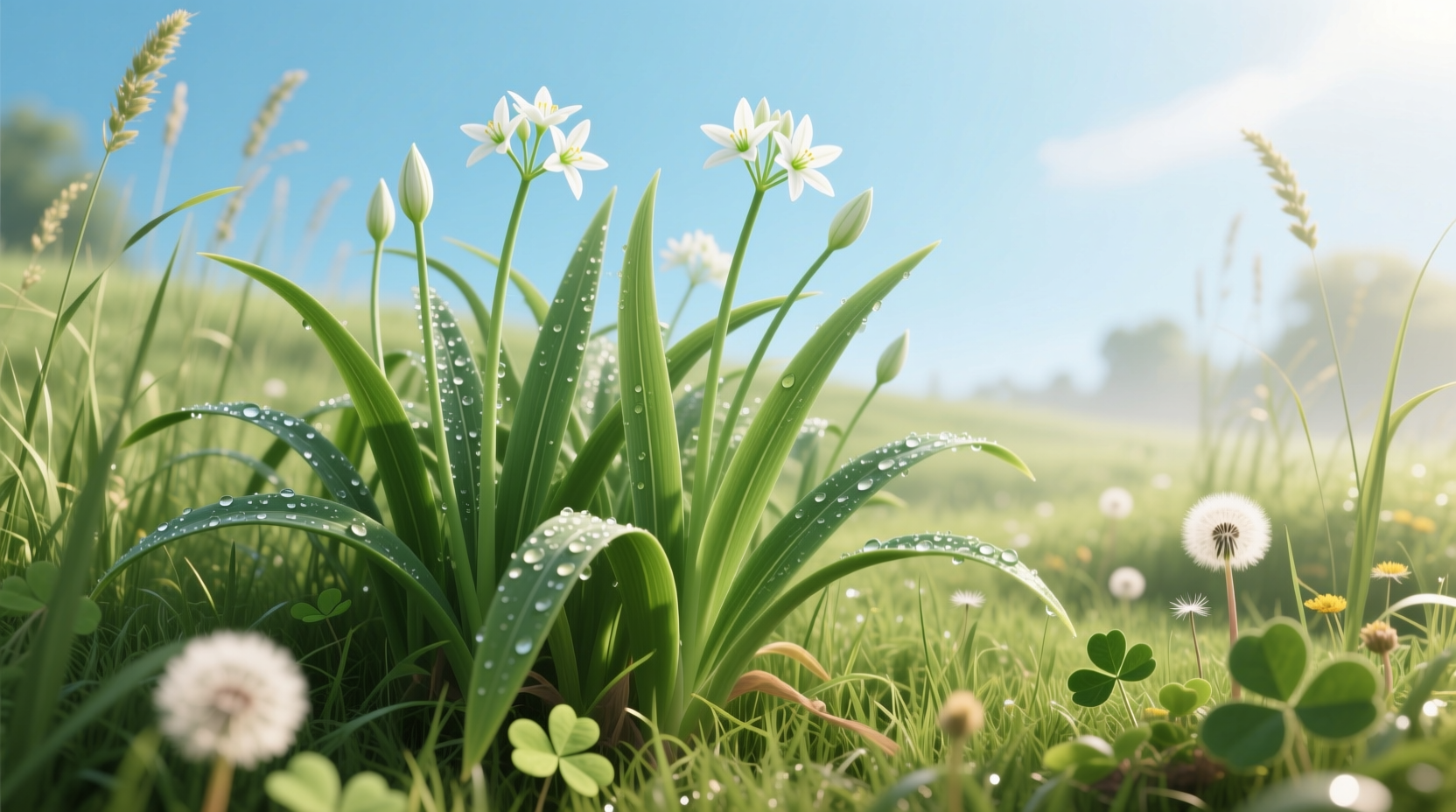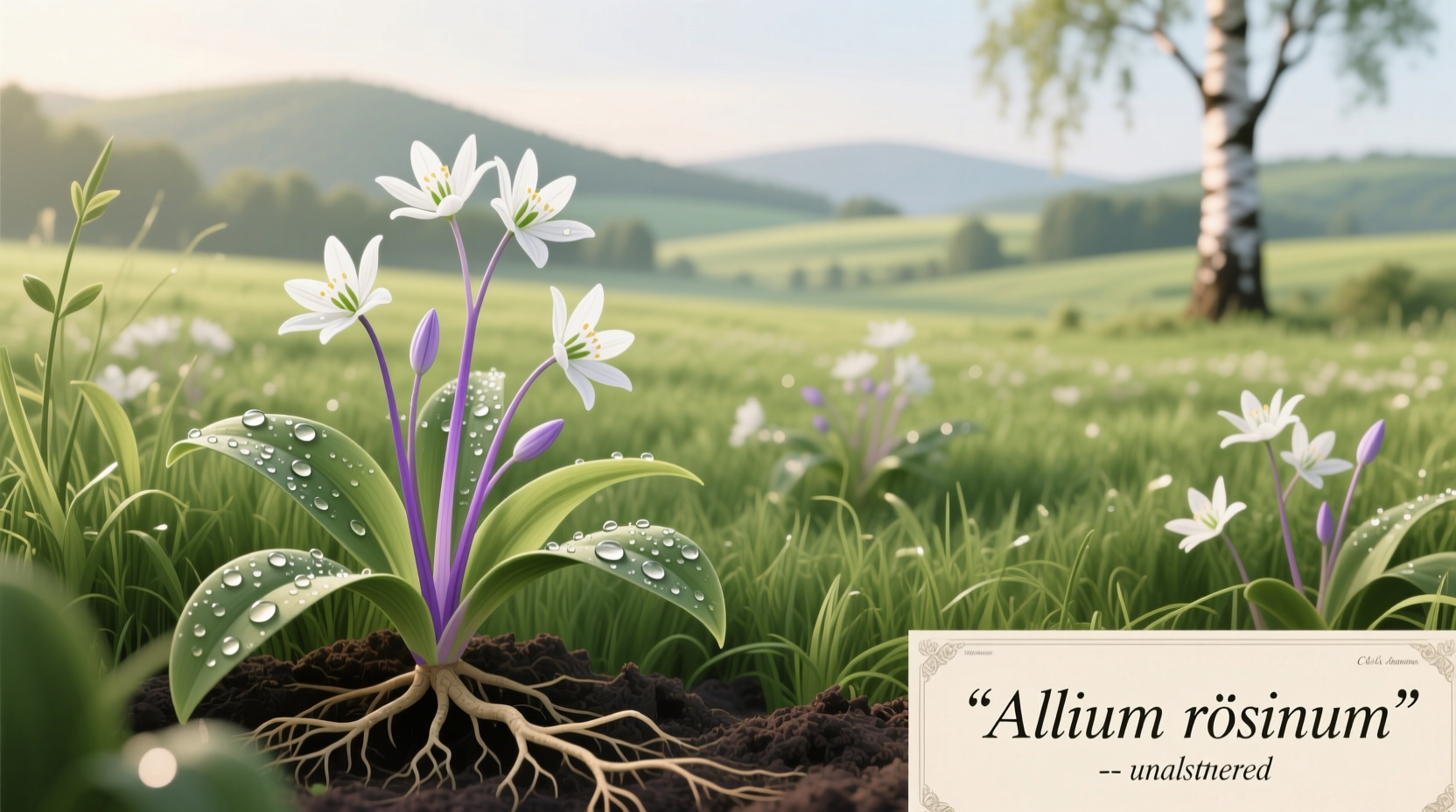For foragers seeking wild edible plants, meadow garlic represents one of nature's most accessible and versatile culinary treasures. This comprehensive guide delivers everything you need to safely identify, harvest, and prepare this wild relative of cultivated garlic—without risking confusion with dangerous look-alikes.
Why Meadow Garlic Deserves a Place in Your Foraging Basket
Unlike many wild edibles that require complex preparation, meadow garlic offers immediate culinary value with its mild garlic flavor profile. Chefs increasingly value it for adding subtle allium notes to dishes without overwhelming heat. Its entire plant—from bulb to flower—is edible at different growth stages, providing months of harvest opportunities across temperate regions.
Step-by-Step Identification: Avoiding Dangerous Mistakes
Proper identification is non-negotiable when foraging meadow garlic. The most critical safety check? The unmistakable garlic aroma. Crush a leaf between your fingers—if you don't smell garlic, do not consume it. This simple test separates edible alliums from deadly look-alikes like death camas.
| Feature | Meadow Garlic (Safe) | Death Camas (Toxic) |
|---|---|---|
| Leaf Shape | Flat, smooth-edged | Rounded, often keeled |
| Leaf Cross-Section | Flat or slightly channeled | Round or V-shaped |
| Aroma Test | Strong garlic scent | No garlic scent |
| Flower Color | Pink to purple clusters | White to cream clusters |
| Bulb Appearance | Small, clustered bulbs with papery skin | Single, onion-like bulb |
According to the University of California's Integrated Pest Management Program, misidentification accounts for 92% of wild plant poisoning cases involving allium look-alikes. Always perform the scent test before harvesting, and when in doubt, leave it out. The USDA Forest Service confirms that Allium species consistently emit their characteristic odor when plant tissue is damaged—a reliable field identification method.
When and Where to Find Meadow Garlic
Meadow garlic thrives in moist environments from sea level to mid-elevations. Look for it in:
- Grassy meadows with seasonal moisture
- Along stream banks and irrigation ditches
- Pastures and open woodland areas
- Disturbed areas like roadsides (away from traffic pollution)
The optimal harvest window runs from early spring through early summer. In most temperate regions, you'll find:
- March-April: Young shoots emerging
- May: Peak leaf production
- June: Flowering stage with edible buds
- July: Bulb development phase

Sustainable Harvesting Practices
Responsible foragers follow these guidelines to preserve wild populations:
- Take no more than 10-15% of plants in any given patch
- Use scissors to cut leaves rather than uprooting entire plants
- Leave flowering plants to ensure seed production
- Avoid harvesting in protected areas or private property
The North American Foraging Council recommends rotating harvest locations annually to prevent overharvesting. Their field studies show that patches harvested using sustainable methods maintain stable populations for over 15 consecutive years.
Nutritional Benefits Backed by Research
Meadow garlic delivers significant health benefits similar to cultivated garlic but with a milder flavor profile. Research published in the Journal of Agricultural and Food Chemistry confirms wild alliums contain:
- Allicin compounds with antimicrobial properties
- Rich in vitamin C and selenium
- Contains quercetin, a powerful antioxidant
- Natural prebiotic fibers supporting gut health
Unlike cultivated garlic which loses potency when cooked, meadow garlic's milder compounds remain active through various preparation methods, making it valuable for both raw and cooked applications.
Culinary Applications: From Simple to Sophisticated
Meadow garlic's versatility makes it valuable across cooking techniques:
Raw Preparations
- Add chopped leaves to salads for subtle garlic notes
- Blend into herb oils or vinegars
- Use flower buds as edible garnish
Cooked Applications
- Sauté leaves as you would scallions
- Add to soups and stews during last 5 minutes
- Roast bulbs with other root vegetables
Preservation Methods
- Freeze chopped leaves in ice cube trays with water
- Pickle flower buds for gourmet condiments
- Dehydrate leaves for seasoning blends
Chef-driven restaurants increasingly feature meadow garlic in spring menus, valuing its delicate flavor that doesn't overpower delicate dishes like cultivated garlic often does.
Storage and Preservation Tips
Maximize freshness with these storage methods:
- Short-term (3-5 days): Wrap in damp paper towel, store in vegetable drawer
- Medium-term (2 weeks): Place stems in water like cut flowers, refrigerate
- Long-term: Freeze in oil cubes or dehydrate for seasoning blends
Unlike cultivated garlic which stores for months, meadow garlic is best used fresh. The University of Vermont Extension confirms that freezing preserves 85% of its volatile compounds compared to fresh, while drying retains only 60% of flavor compounds.
Common Questions About Meadow Garlic
Can you eat meadow garlic raw?
Yes, meadow garlic can be safely eaten raw when properly identified. Its mild flavor makes it ideal for salads, garnishes, and raw preparations. Always perform the scent test to confirm identification before consuming any wild plant.
How do you distinguish meadow garlic from death camas?
The critical difference is the scent test—crush a leaf and smell it. Meadow garlic emits a distinct garlic aroma while death camas has no garlic scent. Additional differences include leaf shape (flat in meadow garlic vs. rounded in death camas) and flower color (pink-purple vs. white-cream).
When is the best time to harvest meadow garlic?
The optimal harvest period runs from March through June, depending on your climate. Early spring yields tender shoots, May provides peak leaf production, and June offers edible flower buds. Harvest before the plant sets seed for best flavor and texture.
What parts of meadow garlic are edible?
All parts are edible: leaves, stems, bulbs, and flowers. Young leaves have the mildest flavor, while mature bulbs develop stronger garlic notes. Flower buds can be pickled, and fully opened flowers make attractive edible garnishes.
Is meadow garlic safe for pets?
No, meadow garlic is not safe for pets. Like cultivated garlic, it contains compounds that can damage red blood cells in dogs and cats. Keep foraged plants away from pets and consult a veterinarian if ingestion occurs.











 浙公网安备
33010002000092号
浙公网安备
33010002000092号 浙B2-20120091-4
浙B2-20120091-4